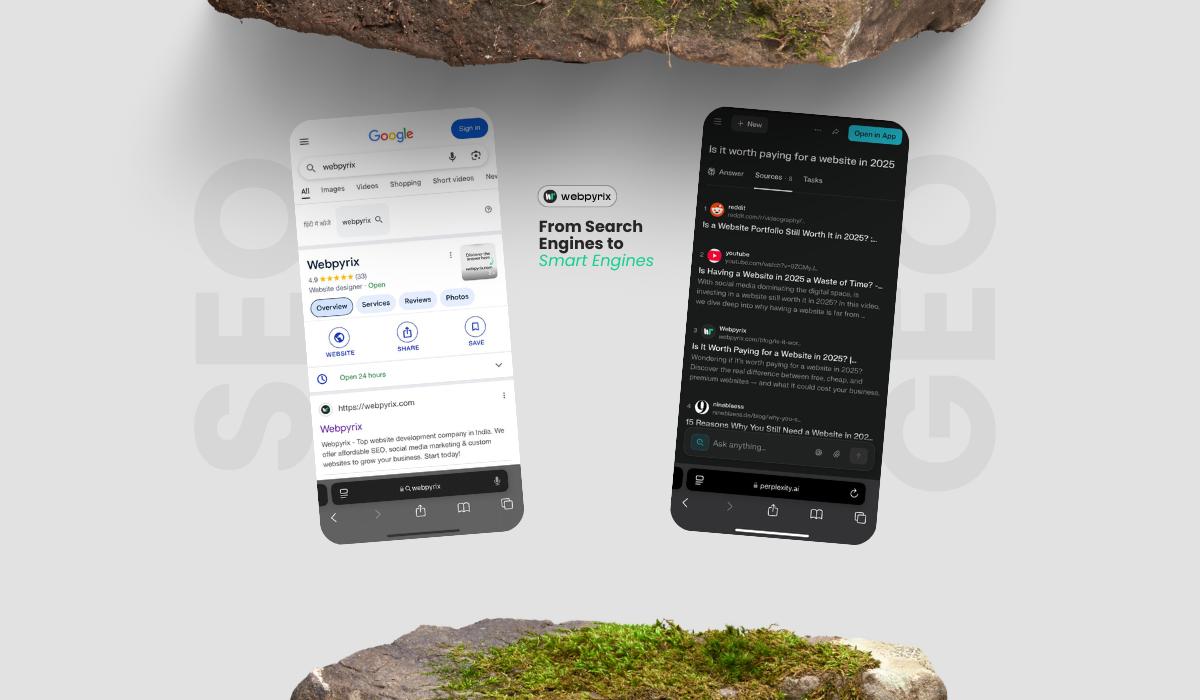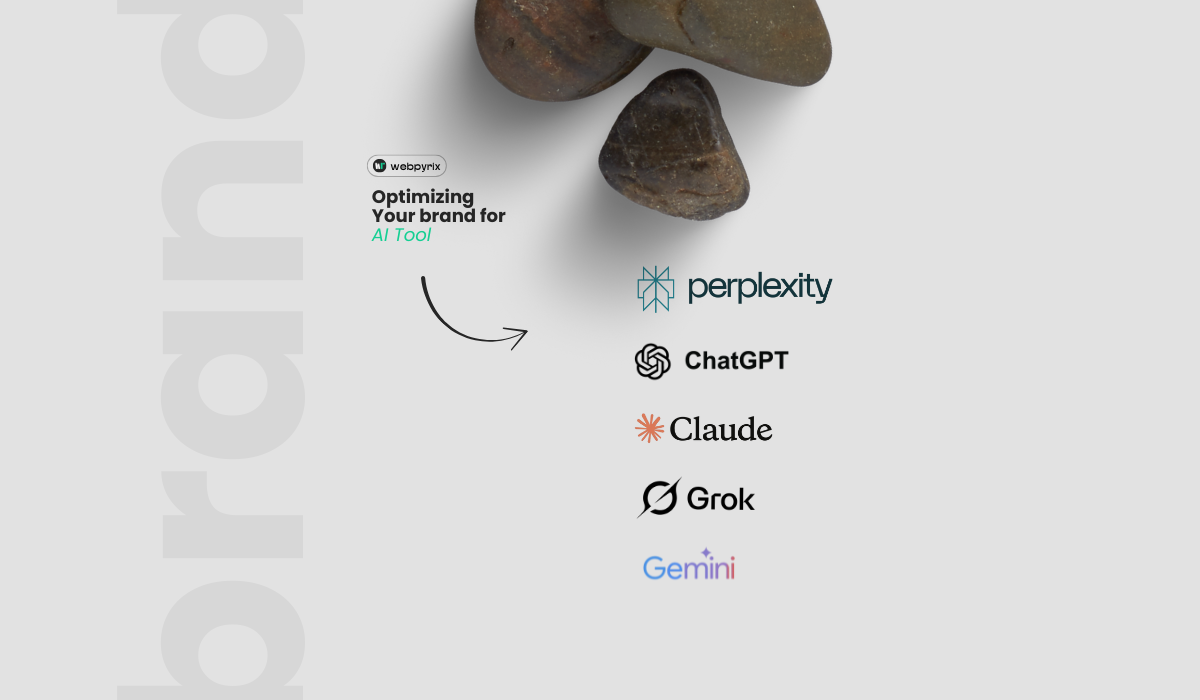Hey there, business owners and digital marketers! Want to get your website noticed by AI search engines like ChatGPT, Google AI Overviews, or Perplexity? If you’re running a small business and dreaming of more website traffic, you’ve probably heard of Generative Engine Optimization (GEO). It’s the hot new way to make your content shine in AI-powered search results. Unlike traditional SEO, which focuses on ranking high on Google’s search engine results pages (SERPs), GEO is all about getting your content picked up by AI tools that answer user questions directly. In this guide, we’ll break down Generative Engine Optimization for Small Businesses in simple, easy-to-understand steps. By the end, you’ll know exactly how to optimize your website for AI search engines and drive crazy amounts of traffic to your site. Let’s dive in!
What Is Generative Engine Optimization (GEO)?
Generative Engine Optimization is the process of tweaking your website content so it’s more likely to appear in answers given by AI-driven search engines. These AI tools, like ChatGPT, Google’s AI Overviews, and Perplexity, don’t just show a list of links like Google does. Instead, they create direct, conversational answers by pulling info from multiple sources. For example, if someone asks, “What’s the best way to grow a small business online?” an AI might summarize tips from your website if it’s optimized properly.
GEO is different from traditional SEO vs GEO. While SEO focuses on keywords, backlinks, and website structure to rank higher on Google or Bing, GEO is about making your content clear, trustworthy, and easy for AI to understand. According to a study by Princeton University, GEO can boost your content’s visibility in AI responses by up to 40%! That’s huge for small businesses looking to stand out.
Why should you care? Well, AI search engines are exploding in popularity. Over 180 million people use ChatGPT monthly, and Google’s AI Overviews appear in 52% of searches (Writesonic, 2025). If your website isn’t optimized for these platforms, you’re missing out on a ton of traffic. At WebPyrix, we help small businesses like yours get noticed online. Check out our Digital Marketing Agency for Small Businesses Complete Guide to see how we can support your growth!
Why GEO Matters for Small Businesses in 2025
Small businesses often struggle to compete with big brands on Google. But here’s the good news: Generative Engine Optimization for Small Businesses levels the playing field. AI search engines don’t just look at how popular your site is—they care about how helpful and relevant your content is. This means even a small business with a tight budget can rank high in AI results.
Here’s why GEO is a game-changer
- More Visibility: AI tools like ChatGPT or Google AI Overviews might mention your brand directly in their answers, driving traffic to your site.
- Builds Trust: When AI cites your content, it makes your business look credible and authoritative.
- Targets Local Audiences: GEO can help with Improving AI Search Visibility for Local Businesses by focusing on location-specific content.
- Future-Proofs Your Business: With AI searches expected to grow to 90 million users by 2027 (RedTree Web Design), starting GEO now keeps you ahead of the curve.
Want to know why every business needs to be online in 2025? Read our blog on Why Every Business Needs a Digital Presence in 2025 to learn more!
SEO vs GEO What’s the Difference?
Let’s clear up the confusion between SEO vs GEO. Both aim to get your website noticed, but they work in different ways. Here’s a simple breakdown:

| Aspect | SEO | GEO |
|---|---|---|
| Focus | Ranking high on Google or Bing’s SERPs with keywords and backlinks. | Getting cited in AI-generated answers by being clear and authoritative. |
| Results | Shows your site in a list of links (e.g., top 10 results). | AI summarizes your content in a direct answer, often with a citation. |
| Tactics | Keyword stuffing, meta tags, and technical SEO. | Natural language, structured data, and E-E-A-T (Experience, Expertise, Authoritativeness, Trustworthiness). |
| Measurement | Tracks clicks, bounce rates, and keyword rankings. | Tracks AI citations, referral traffic from AI platforms, and engagement. |
SEO is still super important (check out our post on How to Check Website Ranking on Google in 2025), but GEO takes it to the next level by making your content AI-friendly. Think of GEO as SEO’s cooler, AI-powered cousin!
Step-by-Step Guide to Generative Engine Optimization
Ready to make your website a favorite for AI search engines? Here’s a Step-by-Step Guide to Generative Engine Optimization that’s easy to follow, even if you’re new to this. These Best Practices for Generative Engine Optimization in 2025 will help you rank higher and drive traffic.
1. Write Clear, Conversational Content
AI loves content that sounds like a real person talking. When you Optimize Content for ChatGPT or other AI tools, use simple, natural language. Avoid jargon or complicated words. For example, instead of saying, “Leverage synergistic strategies,” say, “Use smart ideas to grow your business.” This makes it easier for AI to summarize your content.
Tips:
- Answer questions directly. If someone asks, “How do I get more website traffic?” start with a clear answer like, “To get more website traffic, create helpful content and optimize it for AI search engines.”
- Use bullet points, lists, and short paragraphs to make your content easy to scan.
- Include long-tail keywords like “How to Optimize Website Content for AI Search Engines” naturally in your text.
2. Show Expertise with E-E-A-T
AI search engines like Google and ChatGPT prioritize content that follows E-E-A-T principles: Experience, Expertise, Authoritativeness, and Trustworthiness. This means proving you know your stuff and that people can trust you.
How to Do It:
- Add author bios to your blog posts to show who’s writing and why they’re credible.
- Cite reliable sources, like Moz or Search Engine Land, to back up your claims.
- Include statistics or data. For example, “GEO can increase visibility by 40%” (Princeton University).
- Share real-world examples or case studies to show your experience.
3. Use Structured Data (Schema Markup)
Structured data is like a cheat code for AI Search Engine Optimization 2025. It helps AI understand what your content is about. For example, adding schema markup to your blog posts or product pages tells AI exactly what you’re offering.
How to Add Schema:
- Use tools like Google’s Structured Data Markup Helper to create schema for articles, products, or reviews.
- Add schema for FAQs, “How-To” guides, or local business details to boost Improving AI Search Visibility for Local Businesses.
- Example: If you run a bakery in New York, add schema with your address, hours, and customer reviews to make it easier for AI to recommend you.
4. Focus on User Intent
AI search engines are super smart at understanding what users really want. That’s why Understanding the Difference Between SEO and GEO is key. SEO focuses on keywords, but GEO focuses on user intent—what the user is trying to solve or learn.
Tips:
- Research what your audience is asking using tools like AnswerThePublic or Google’s “People Also Ask” section.
- Create content that answers specific questions, like “How to Optimize Website Content for AI Search Engines” or “Best Practices for Generative Engine Optimization in 2025.”
- Use conversational phrases like “Here’s how to…” or “The easiest way to…” to match how people search with AI.
5. Add Visuals and Interactive Content
AI loves content that’s engaging and easy to digest. Including high-quality images, infographics, or videos can make your content stand out. According to SurferSEO, visuals can boost user engagement, which signals to AI that your content is valuable.
Ideas:
- Create infographics that summarize Generative AI SEO Strategies.
- Add videos explaining complex topics, like a step-by-step guide to GEO.
- Use charts or tables (like the SEO vs GEO table above) to break down information.
6. Optimize for Speed and Mobile
AI search engines prioritize fast, mobile-friendly websites. If your site takes forever to load, AI might skip it. Check out our blog on Is It Worth Paying for a Website in 2025 to learn why a good website matters.
How to Optimize:
- Use Google PageSpeed Insights to check your site’s speed.
- Compress images and enable browser caching to make your site load faster.
- Ensure your site is mobile-friendly since many AI searches happen on phones.
7. Track Your GEO Performance
To know if your AI-Powered Search Optimization is working, you need to track it. Unlike SEO, where you track clicks and rankings, GEO focuses on AI citations and referral traffic.
How to Track:
- Use Google Analytics 4 to monitor traffic from AI platforms (check the “Traffic Acquisition” report).
- Tools like Semrush or STAT can show if your content appears in AI Overviews.
- Look for engagement metrics like time on page or shares to see if users love your content.
GEO Strategies for Small Business Growth
Small businesses can use GEO Strategies for Small Business Growth to compete with bigger brands. Here are some specific tips:
- Localize Your Content: If you’re a local business, include city or region-specific keywords. For example, “Best coffee shop in Miami” or “Miami bakery for birthday cakes.” This helps with Improving AI Search Visibility for Local Businesses.
- Answer Niche Questions: Create blog posts that answer specific questions your audience might ask AI, like “How to start a small bakery with no money.”
- Leverage AI Tools: Use AI tools like Chatsonic to generate topic ideas or optimize your content for GEO. Learn more about AI in our post on How We Can Use AI for Our Business Growth.
Optimizing Content for AI Tools Like ChatGPT and Google SGE
Want to Optimize Content for ChatGPT or Google’s Search Generative Experience (SGE)? Here’s how to make sure AI tools love your content:

- Use Question-Based Content: Write blog posts that start with questions like “What is Generative Engine Optimization?” or “How do I rank higher in AI search results?”
- Be the Go-To Source: Make your content so detailed and helpful that AI can’t help but cite it. For example, this guide is packed with actionable tips to make WebPyrix the authority on GEO.
- Add Citations and Quotes: Include quotes from experts or data from trusted sites like Search Engine Journal to boost credibility.
The Future of Search: Generative Engine Optimization Explained
The Future of Search: Generative Engine Optimization Explained is all about AI taking over how we find information. Traditional search engines like Google are still important, but AI tools are changing the game. By 2026, traditional search volume is expected to drop by 25% as more people use AI search (Search Engine Land). That’s why starting GEO now is so important.
GEO isn’t just a trend—it’s the future. By combining Generative AI SEO Strategies with traditional SEO, you can reach more people, whether they’re searching on Google or asking ChatGPT for answers. Want to learn more about different types of traffic? Check out our blog on Understanding the Different Types of Traffic in Google.
Common Mistakes to Avoid in GEO
Even with the best intentions, it’s easy to mess up GEO. Here are some mistakes to watch out for:
- Keyword Stuffing: Don’t cram keywords like “Generative Engine Optimization” into every sentence. It makes your content hard to read and less likely to be picked up by AI.
- Ignoring Technical SEO: A slow or broken website won’t rank well, even with great content. Fix technical issues first.
- Not Updating Content: AI loves fresh, up-to-date content. Regularly refresh your blog posts to stay relevant.
How WebPyrix Can Help You Master GEO
At WebPyrix, we’re all about helping small businesses grow online. Our team of experts can create a custom GEO strategy to boost your AI Search Visibility Tips and drive traffic to your site. Whether you need help with content, technical SEO, or tracking performance, we’ve got you covered. Curious about whether a website or social media is better for your business? Read our post on Website vs Social Media: Which One Does Your Business Need?.
Ready to dominate AI search results? Contact WebPyrix today, and let’s make your website the go-to source for AI answers!
Frequently Asked Questions (FAQs)
1. What is the difference between SEO and GEO?
SEO (Search Engine Optimization) is about ranking your website higher on Google or Bing by using keywords, backlinks, and technical fixes. GEO (Generative Engine Optimization) focuses on making your content easy for AI tools like ChatGPT or Google AI Overviews to understand and cite in their answers. While SEO gets you listed in search results, GEO gets your content featured in AI-generated responses. Check out our section above on SEO vs GEO for a detailed comparison!
2. How can small businesses use GEO to grow?
Small businesses can use GEO Strategies for Small Business Growth by creating clear, helpful content that answers specific customer questions. For example, write blog posts about your products or services using local keywords like “best pizza in Chicago.” Add structured data (schema markup) to help AI find your content. GEO is great because it doesn’t rely on having a big budget—just great content! Read more about growing your business in our post on How We Can Use AI for Our Business Growth.
3. How do I optimize my website for AI search engines?
To Optimize Website Content for AI Search Engines, write in a conversational tone, answer questions directly, and use structured data like schema markup. Make sure your website is fast and mobile-friendly, as AI prioritizes user-friendly sites. Include credible sources and data to show expertise. For more tips, see our Step-by-Step Guide to Generative Engine Optimization above or check out Moz’s guide to AI search.
4. Can GEO help local businesses get more customers?
Yes! Improving AI Search Visibility for Local Businesses is one of GEO’s biggest strengths. By including location-specific keywords and adding schema markup for your business address and reviews, you can make it easier for AI to recommend your business to local customers. For example, if you own a gym in Seattle, write content like “Top 5 fitness tips for Seattle residents” to attract local searches.
5. What are the best tools for GEO in 2025?
Some of the Best Practices for Generative Engine Optimization in 2025 involve using tools like:
- Google Analytics 4 to track AI referral traffic.
- Semrush or Ahrefs to find trending questions and keywords.
- Google’s Structured Data Markup Helper to add schema to your site.
- AnswerThePublic to discover what your audience is asking AI.
These tools help you create content that AI loves and track your AI-Driven Search Engine Ranking.
6. How do I know if my GEO efforts are working?
Track your AI Search Engine Optimization 2025 performance by checking if AI tools like ChatGPT or Google AI Overviews cite your content. Use Google Analytics to monitor traffic from AI platforms (look for referral traffic from “chat.openai.com” or similar). You can also use tools like STAT to see if your content appears in AI Overviews. High engagement, like longer time on page, is another sign your GEO is working.
7. Is GEO the same as optimizing for ChatGPT?
Not exactly, but Optimizing Content for AI Tools Like ChatGPT and Google SGE is a big part of GEO. ChatGPT and Google’s Search Generative Experience (SGE) are two examples of AI search engines, but GEO applies to all AI platforms, including Perplexity and others. The key is to create clear, question-focused content that AI can easily summarize and cite.
8. Why is GEO important for the future of search?
The Future of Search: Generative Engine Optimization Explained shows that AI search is growing fast. By 2026, traditional search volume could drop by 25% as more people use AI tools (Search Engine Land). GEO helps you stay ahead by making your content ready for AI-driven searches, ensuring your business doesn’t miss out on traffic.
Have more questions about GEO? Contact WebPyrix, and we’ll help you create a strategy to dominate AI-Powered Search Optimization!
Final Thoughts
Generative Engine Optimization is the key to getting your small business noticed in 2025. By creating clear, helpful, and trustworthy content, you can rank high in AI search results and drive tons of traffic to your site. Follow the steps in this guide, avoid common mistakes, and use tools like Google Analytics and Semrush to track your success. With GEO, you’re not just competing—you’re winning.
Start optimizing your content today, and watch your traffic soar! For more tips on growing your business online, explore our blog at WebPyrix or get in touch with our team for a personalized GEO strategy.





Make A Comment